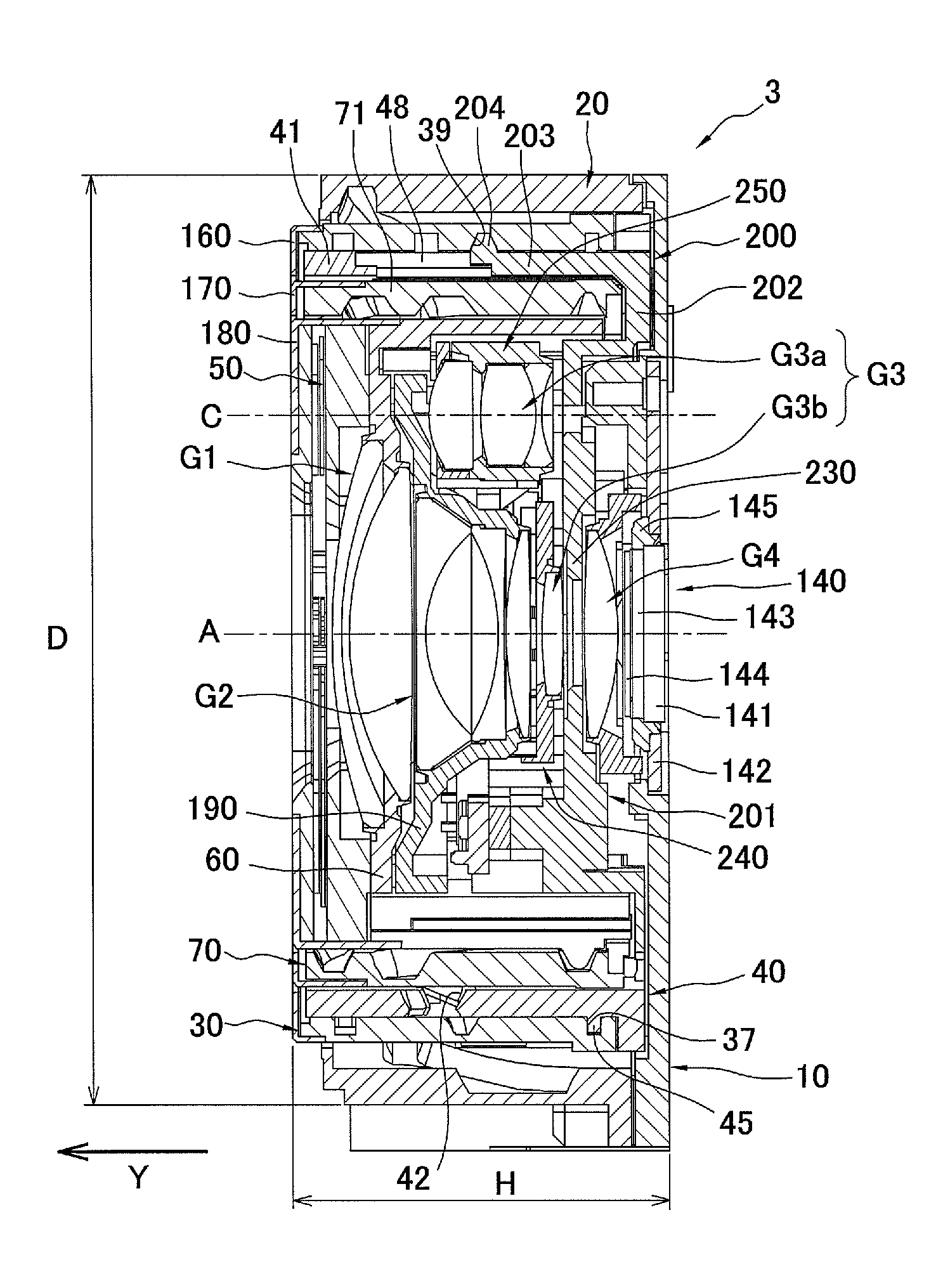Lens barrel
a technology of lens barrel and barrel body, which is applied in the field of lens barrel, can solve the problems of difficult to achieve further reduction of the size of the lens barrel, the bulkiness of the actuator, and the size of the actuator
- Summary
- Abstract
- Description
- Claims
- Application Information
AI Technical Summary
Problems solved by technology
Method used
Image
Examples
first embodiment
1: Overview of Digital Camera
[0054]A digital camera 1 will be described through reference to FIGS. 1 and 2. FIGS. 1 and 2 are simplified oblique views of the digital camera 1. FIG. 1 shows the case when a lens barrel 3 is in its imaging state (wide angle end).
[0055]The “wide angle end” referred to here indicates a state in which the focal length of an optical system O (discussed below) is at its shortest, and the “telephoto end” indicates a state in which the focal length of the optical system O is at its longest. A state when the power is on is defined as an imaging state, and a state in which the lens barrel 3 is at its shortest length with the power off is defined as a stowed state. In this embodiment, the imaging state corresponds to the wide angle end state of the optical system O.
[0056]The digital camera 1 is a camera used to acquire an image of a subject. A multi-stage telescoping lens barrel 3 is installed in the digital camera 1 in order to afford a higher zoom ratio and re...
second embodiment
[0222]In the first embodiment above, the retractable lens frame 250 is retracted to avoid the second lens frame 190, but when the diameter of the second lens group G2 is large, the retractable lens frame 250 protrudes far outward in the radial direction, and this can make it harder to reduce the size of the lens barrel 3 in the radial direction.
[0223]In view of this, a constitution is possible in which the second lens group G2 is retracted in addition to the retractable lens group G3a. A lens barrel 303 pertaining to the second embodiment will now be described through reference to FIGS. 24 to 33B.
[0224]Those components having substantially the same function as the components in the first embodiment above will be numbered the same, and will not be described in detail again.
1: Configuration of Lens Barrel
[0225]As shown in FIGS. 24 to 28, the lens barrel 303 comprises the optical system O, the fixed frame 20, the zoom motor unit 110, the master flange 10, the drive frame 30, the camera...
PUM
 Login to View More
Login to View More Abstract
Description
Claims
Application Information
 Login to View More
Login to View More - R&D
- Intellectual Property
- Life Sciences
- Materials
- Tech Scout
- Unparalleled Data Quality
- Higher Quality Content
- 60% Fewer Hallucinations
Browse by: Latest US Patents, China's latest patents, Technical Efficacy Thesaurus, Application Domain, Technology Topic, Popular Technical Reports.
© 2025 PatSnap. All rights reserved.Legal|Privacy policy|Modern Slavery Act Transparency Statement|Sitemap|About US| Contact US: help@patsnap.com



